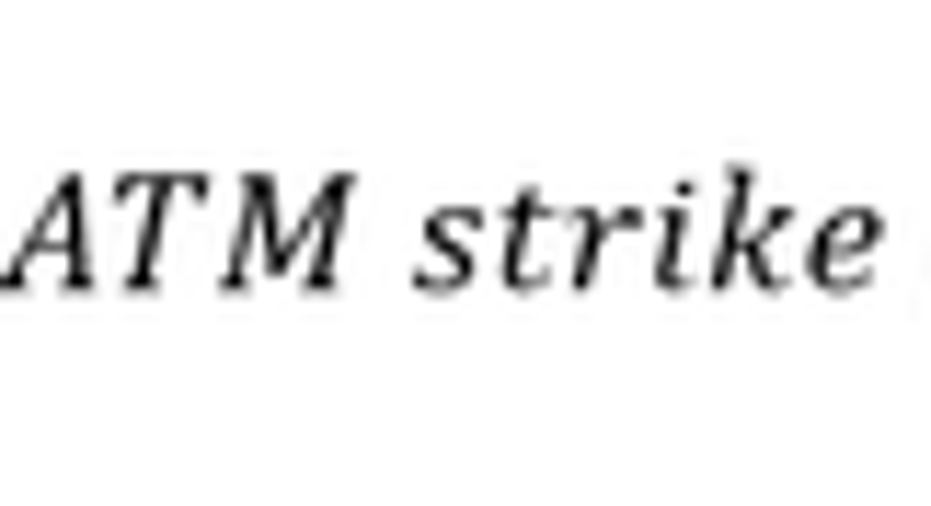What Is a Butterfly Option?

Image source: Getty Images.
A butterfly option spread is a risk-neutral options strategy that combines bull and bear call spreads in order to earn a profit when the price of the underlying stock doesn't move much. The profit potential is rather limited, but so is the risk, which makes this a popular strategy for traders with a neutral outlook.
Setting up a butterfly spread
A butterfly spread is a combination of one bear call spread and one bull call spread, with the same center strike price. To create the two spreads, you buy an out-of-the-money call option and an in-the-money call option, and simultaneously sell two at-the-money calls. It's also worth noting that this trade can be set up using all puts -- one bear put spread and one bull put spread.
This is a neutral option strategy, and you're essentially betting that the stock's price won't move much between now and the expiration date.
As an example, let's say that I believe Apple (NASDAQ: AAPL), which trades for $115 per share, will stay around that price for at least the next month or so (I'm writing this in September 2016). I can construct a butterfly spread in the following manner:
- Buy one October call with a $110 strike price for $615
- Buy one October call with a $120 strike price for $120
- Sell two October calls with a $115 strike price for $300 each ($600 total)
This trade would have a total cost of $135 ($1.35 per share), plus commissions. Let's take a look at when this trade could make and lose money, and how much.
The best-case scenario
The ideal case with a butterfly spread would be for the underlying stock to close at exactly the strike price of the two at-the-money calls. In this case, the profit per share would be equal to the strike price of the two short calls minus the strike price of the in-the-money long call and the net premium you paid for the trade, plus commissions.
In our Apple example, the maximum possible profit would be:
Since each options contract corresponds to 100 shares of stock, this translates to an overall maximum profit of $365, minus any trading commissions.
Breakeven and when you'll make and lose money
The breakeven points for a butterfly spread would be the strike prices of the two short calls, after accounting for the premium paid for the trade. On the high end, this means the upper strike price minus the premium paid, and on the low end, the breakeven point would be the lower strike price plus the premium.
In the Apple example, the upper breakeven point would be $120 minus $1.35, or $118.65, and the lower breakeven point would be $110 plus $1.35, or $111.35. So, if the stock was trading for more than $111.35 per share at expiration, but less than $118.65, the trade would make money. If it were to close outside of that range, the trade would lose money.
The worst-case scenario
Speaking of losing money, let's take a look at how much a butterfly spread could possibly lose. Because of the offsetting option spreads, the maximum you can lose is equal to the total premium you pay for the trade, plus your commissions.
For our Apple trade, this means that the most you can possibly lose is $135, plus your brokerage commissions.
So, the trade has a maximum profit potential of $365 and a maximum loss of just $135, excluding commissions. That's why butterfly spreads are popular tools for neutral options strategies.
Image source: Author.
The iron butterfly
An iron butterfly is a variation of the butterfly spread that involves both calls and puts. You can read more about the iron butterfly strategy here if you're interested, but here's the basic structure:
- Buy one out-of-the-money put option
- Buy one out-of-the-money call option
- Sell at-the-money call and put options (one each)
The overall effect of the trade is extremely similar to the butterfly spread we discussed here -- limited profit potential as well as limited downside risk.
The $15,834 Social Security bonus most retirees completely overlook If you're like most Americans, you're a few years (or more) behind on your retirement savings. But a handful of little-known "Social Security secrets" could help ensure a boost in your retirement income. For example: one easy trick could pay you as much as $15,834 more... each year! Once you learn how to maximize your Social Security benefits, we think you could retire confidently with the peace of mind we're all after.Simply click here to discover how to learn more about these strategies.
Matthew Frankel owns shares of Apple. The Motley Fool owns shares of and recommends Apple. The Motley Fool has the following options: long January 2018 $90 calls on Apple and short January 2018 $95 calls on Apple. Try any of our Foolish newsletter services free for 30 days. We Fools may not all hold the same opinions, but we all believe that considering a diverse range of insights makes us better investors. The Motley Fool has a disclosure policy.



















